Archive
2021
KubaParis
Charlott Weise. Tinted Glass, Atelier 4.1, Kunsthalle Münster


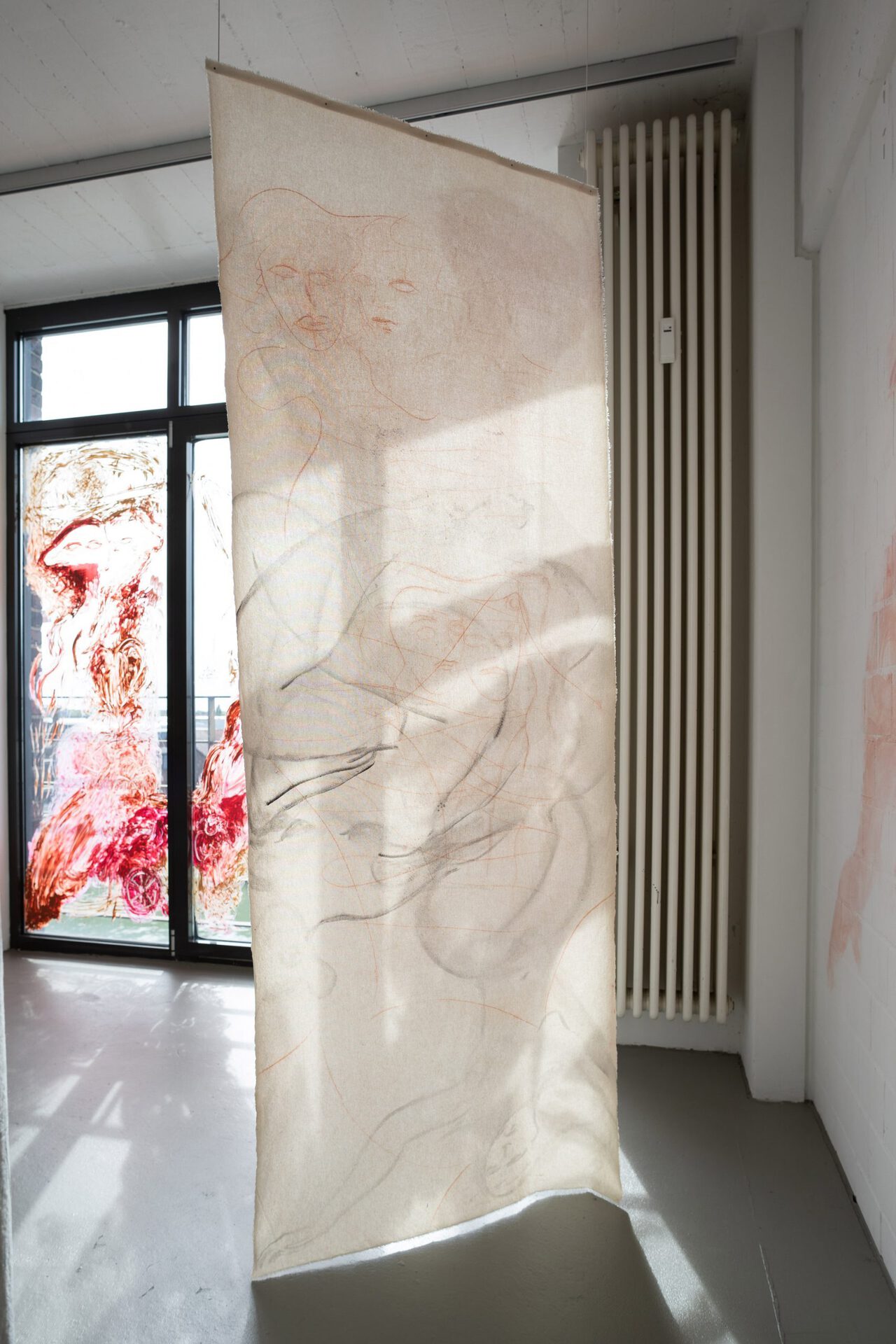

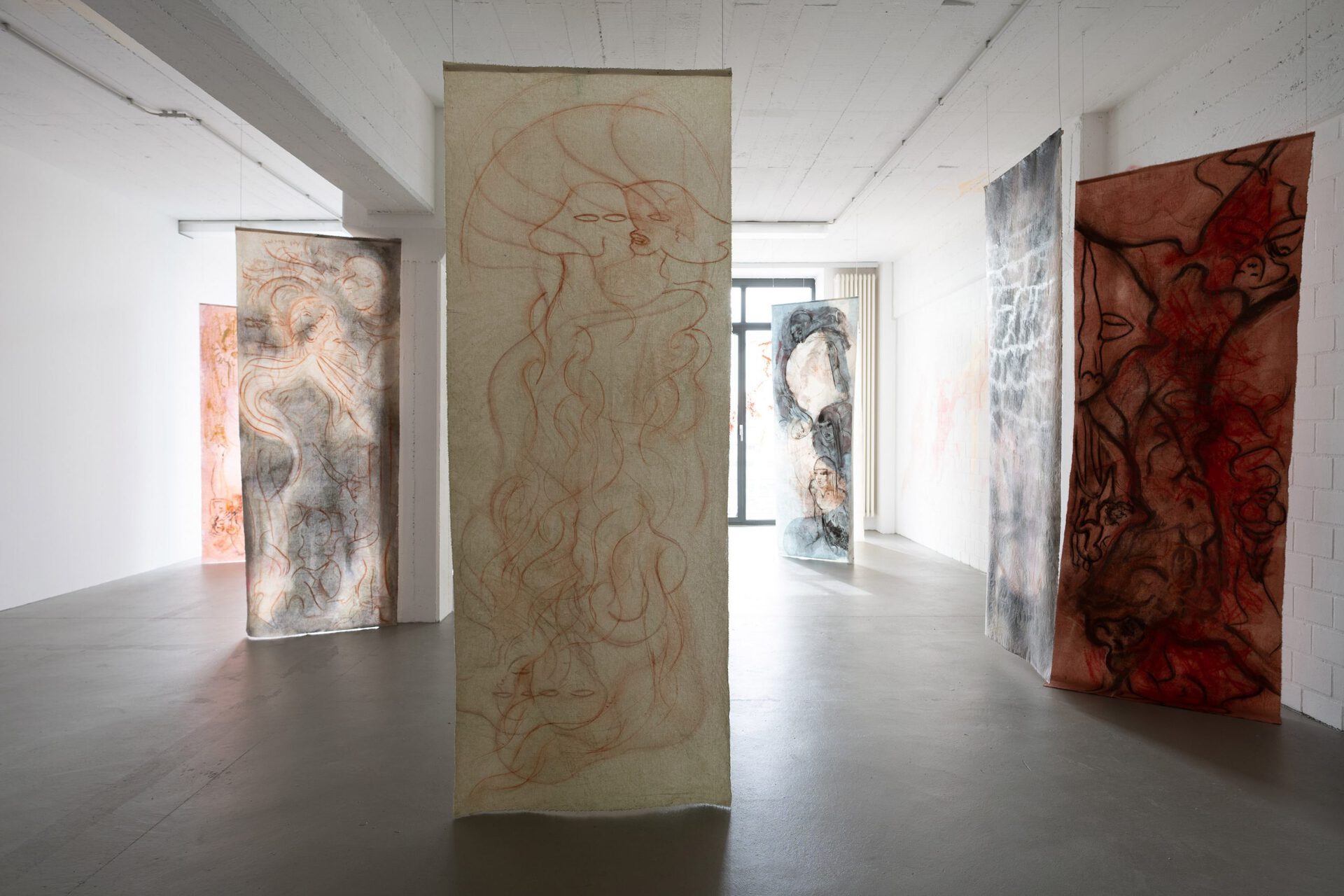
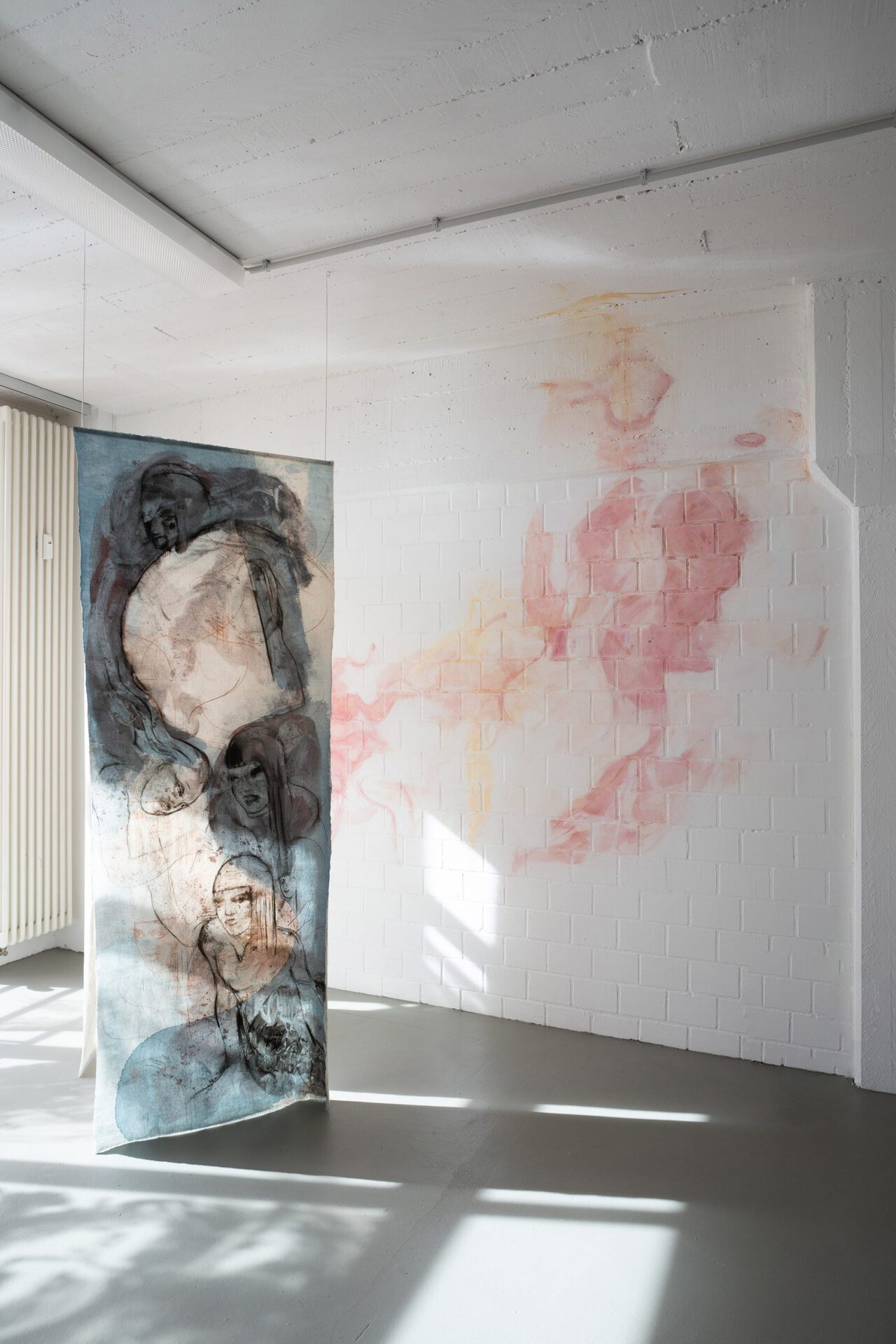
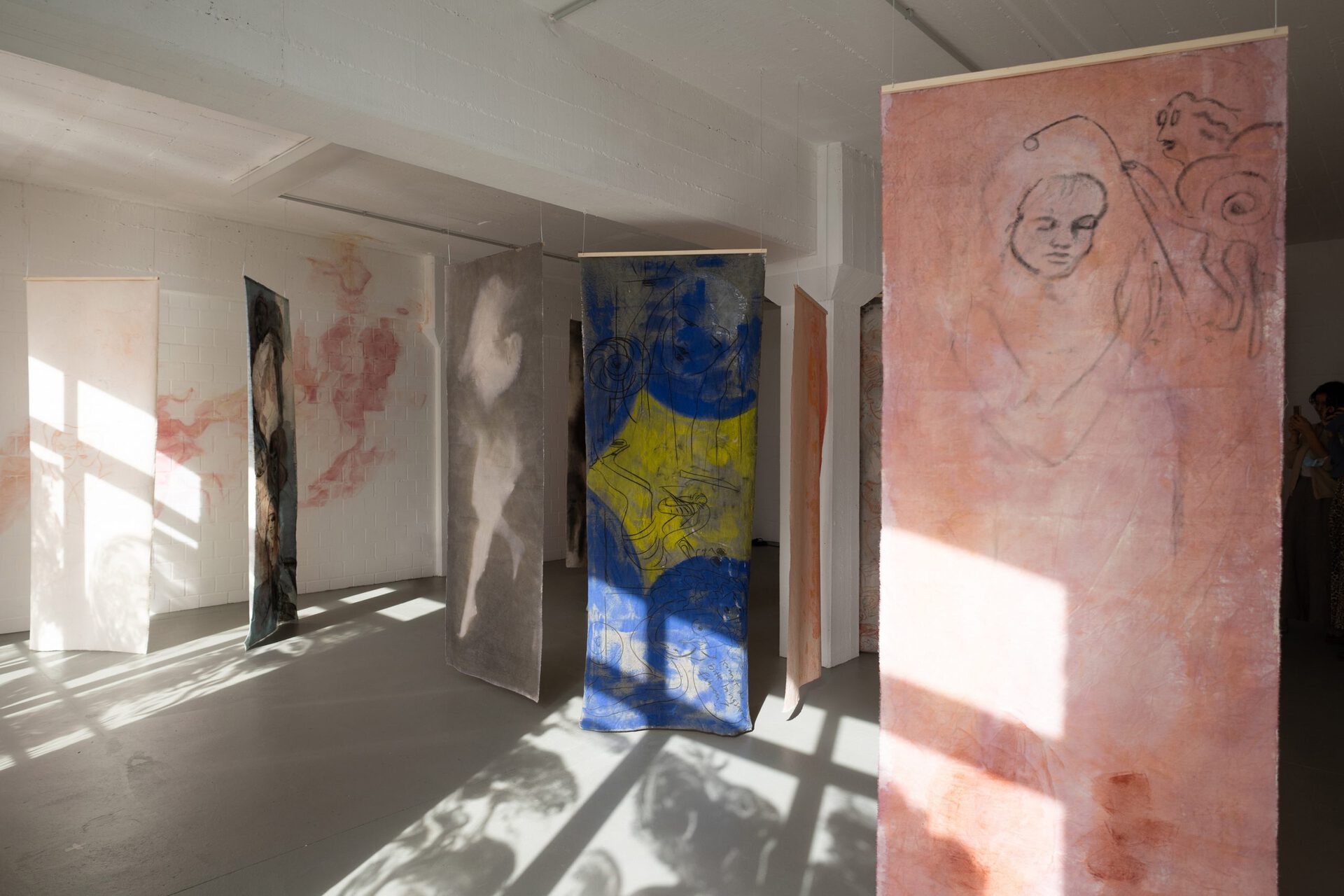

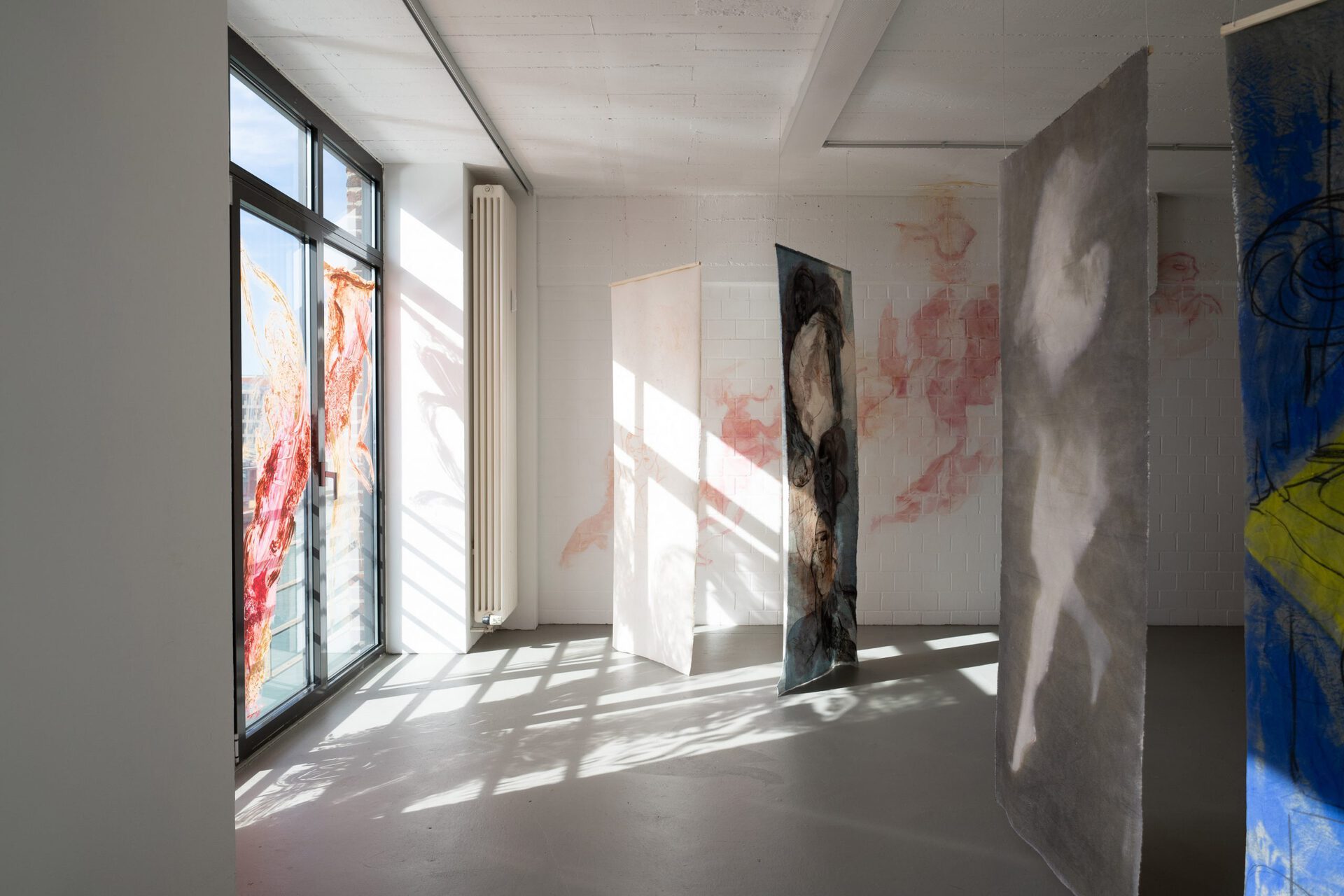
Location
Kunsthalle MünsterDate
02.10 –13.11.2021Curator
Franca ZittaPhotography
Hubertus HuvermannSubheadline
Charlott Weise. Tinted Glass at Atelier 4.1, Kunsthalle MünsterText
Tinted Glass evokes altered perception with a before and behind, with an inside and outside. The Kunsthalle Münster is presenting Charlott Weise’s first solo exhibition in a German art institution. In her works, the Amsterdam-based artist examines the representation and reproduction of femininity and its performance, issues she explores in various realms such as literature, fashion, (mainstream) media and theatre. At the same time, painting and its rich history offer a crucial starting point for her artistic inquiry. Her practice can be seen as a form of intuitive visual writing through which she reflects on an unconscious inner world composed of relationships, images and obsessions – a terrain in which important roles are played by female archetypes. These crop up in mundane as well as stylised explorations, whereby theatricality emerges as a central element of her work, both in the narratives within the individual works and in their spatial mises-en-scène.
The depicted motifs are not tied to a particular narrative; instead, they show scenes that seem to have issued from dreamworlds, playing with reality and fantasy, or whose different moods remind us of film sets. In her abstract and figurative representations the artist creates a tense balance between sketch-like, brutal and highly formulated approaches. Bodies take shape, only to disappear again, or they dissolve into abstract forms. Meanwhile, various kinds of entities resembling ghosts or angels, as well as female protagonists, occupy centre stage and convene to enact a sort of cabaret dissociated from all time and space.
On the textile carriers, Weise not only uses conventional colouring substances – oils, inks, charcoal, pastels and sanguine crayon – but also materials traditionally considered as female, such as earth pigments and make-up. These play on obsolete connotations concerning the relationship between woman and nature, and the possibilities for designing one’s outer appearance, even as far as creating a mask-like persona. Through lengthy painting processes in which the artist doused the cotton fabrics in washes, some of her paintings come to resemble vellum or skin. The works reveal wrinkles and creases, abrasions or accidental hand prints – traces of painterly activity which on their surfaces merge with the drawing and painting. Viewed through a feminist lens, the works in Tinted Glass can be read in the context of “embodiment”: the body of the artist has inscribed itself into the paintings, has physically shaped the process of painting rather than following a concept constructed in language. This thereby brings the sensual aspect of the paintings to the fore, allowing the textile carrier to act, as it were, as the medium of the unconscious.
The exhibition is held in the Atelier 4.1, which is affiliated to the Kunsthalle, and presents a series of works that were developed by the artist in dialogue with the space.
Charlott Weise (born 1991, Görlitz) is a German Amsterdam based painter. She studied the HfbK Dresden, the Gerrit Rietveld Academie in Amsterdam and was in residence at De Ateliers, Amsterdam. Recent solo exhibitions include Nevven Gallery, Gothenburg (2021), Kunstfort bij Vijfhuizen, Vijfhuizen (2018) and A Maior, Viseu (PT) (2018). Her works have been included in the following group shows (selection): Arti & Amicitiae, Amsterdam (2019); W139, Amsterdam; Damien and the Love Guru, Brussels (2019); Lower.Green, Norwich (2018); Ginvera Gambino, Cologne (2017). She is the winner of the Koninklijke Prijs voor Vrije Schilderkunst (2020).
The exhibition is supported by: Mondriaan Fund, Kingdom of the Netherlands
Franca Zitta, Translation: Matthew Partridge